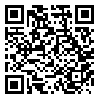Volume 16, Issue 61 (fall 2012)
jwss 2012, 16(61): 155-166 |
Back to browse issues page
Download citation:
BibTeX | RIS | EndNote | Medlars | ProCite | Reference Manager | RefWorks
Send citation to:



BibTeX | RIS | EndNote | Medlars | ProCite | Reference Manager | RefWorks
Send citation to:
M. Bagheri Bodaghabadi, M. H. Saleh, I. Esfandiarpoor Borujeni, J. Mohammadi, A. Karimi Karouyeh, N. Toomanian. Evaluation and Generalization of SoLIM for Digital Soil Mapping Using Digital Elevation Model and its Attributes. jwss 2012; 16 (61) :155-166
URL: http://jstnar.iut.ac.ir/article-1-2436-en.html
URL: http://jstnar.iut.ac.ir/article-1-2436-en.html
M. Bagheri Bodaghabadi  , M. H. Saleh *
, M. H. Saleh *  , I. Esfandiarpoor Borujeni
, I. Esfandiarpoor Borujeni  , J. Mohammadi
, J. Mohammadi  , A. Karimi Karouyeh
, A. Karimi Karouyeh  , N. Toomanian
, N. Toomanian 
 , M. H. Saleh *
, M. H. Saleh *  , I. Esfandiarpoor Borujeni
, I. Esfandiarpoor Borujeni  , J. Mohammadi
, J. Mohammadi  , A. Karimi Karouyeh
, A. Karimi Karouyeh  , N. Toomanian
, N. Toomanian 
, mehsalehi@yahoo.com
Abstract: (17406 Views)
Discrete Models of Spatial Variability (DMSV) have limitations for soil identification in traditional soil maps. New approaches, generally called digital soil mapping (DSM), using continuous methods (CMSV), try to predict soil classes or soil properties based on easily-available environmental variables. The objective of this study was to map the soil classes of the Borujen area, Chaharmahal-va-Bakhtiari province, using digital elevation model (DEM) and its attributes and Soil-Land Inference Model (SoLIM). To do this, eighteen terrain attributes were derived from the DEM of the area. The primary analysis showed seven attributes are the most important derivatives. These derivatives as well as three dominant soil subgroups and seven soil families of the region (41 profiles from 125 profiles) were used to construct the input data matrix of the model. Then, output fuzzy soil maps of SoLIM were converted to polygonal soil map, using ArcGIS. Results showed that different combinations of DEM attributes have different accuracy rates for soil prediction. The accuracy of the interpolation was twice that of the extrapolation. Although SoLIM had an acceptable accuracy for soil nomination, and identification of soil map units’ types, it did not have enough accuracy for the location of soil classes. It seems that using other data like parent material and geomorphic surface maps will increase the accuracy of the model prediction.
| Rights and permissions | |
 |
This work is licensed under a Creative Commons Attribution-NonCommercial 4.0 International License. |




